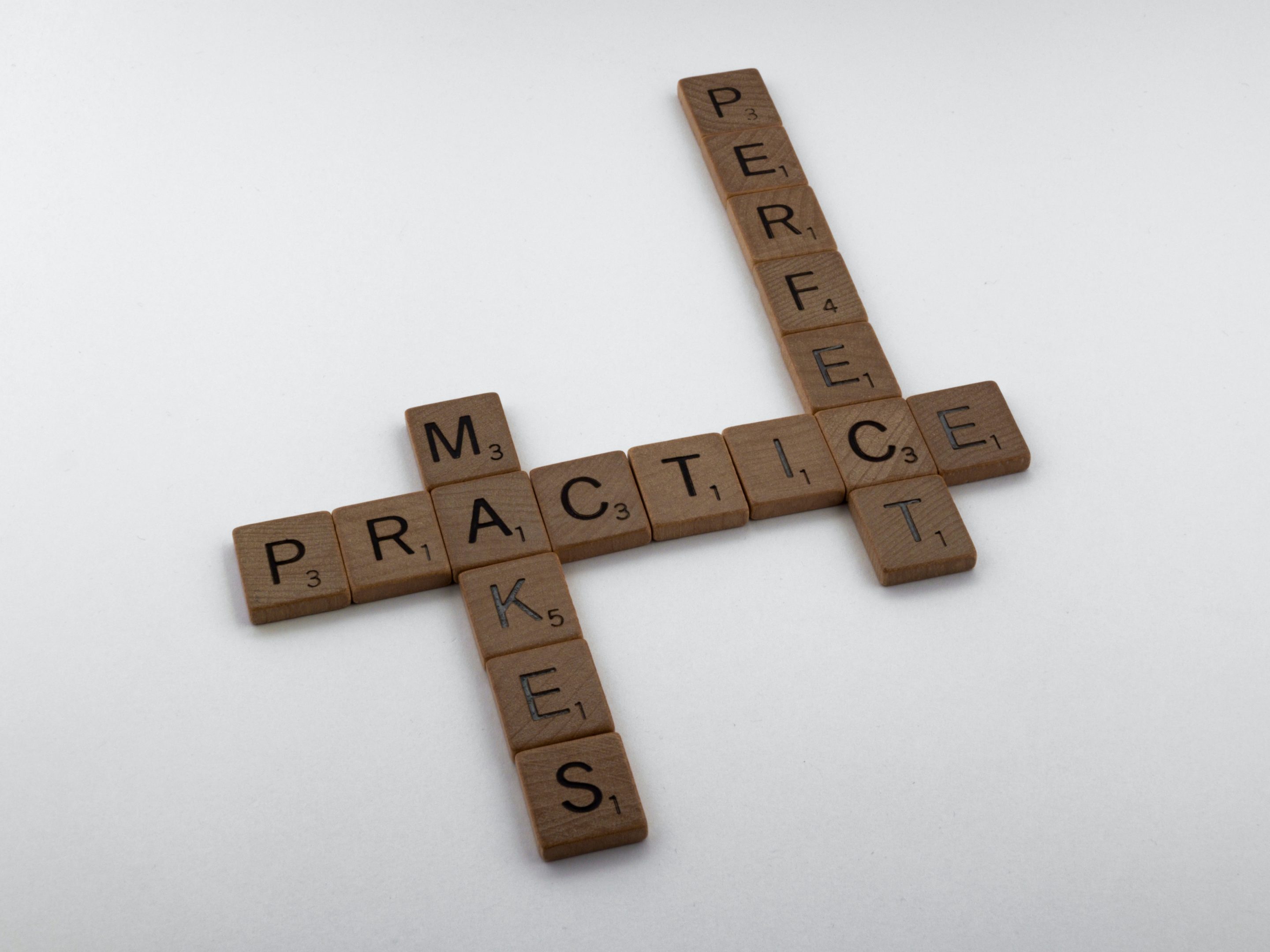Will Improv And Practice Make You a Top-Performing Sales Representative?

We’ve all been through rushed sales onboarding that leaves you to fend for yourself. Luckily, there are a few ways to take your success into your own hands–but these suggestions may not be what you think.
Dr. Stefanie Boyer is a Professor of Marketing at Bryant University, TEDx speaker, and Co-Founder of RNMKRS, a virtual training and assessment platform for sales talent. She’s a recipient of the prestigious American Marketing Association Sales Educator of the Year Award, and co-author of The Little Black Book of Social Media: Strategies to Ignite Your Business, Influencer, and Professional Brand.
Dr. Boyer joined the Predictable Revenue podcast to discuss how improvisation can make you a top-performing sales development rep (SDR).
Simulating tough conversions in SDR Training
As a sales professor, Stephanie studied SDR training and where reps typically go wrong during sales calls. She learned that one of the fastest ways to improve a student’s sales skills was to have them practice customer conversations.
At the university sales competitions, students were given a certain case to roleplay and then critiqued by a panel of judges, coaches, and employers. Dr. Boyer began to think about how she could apply this same technique to SDR training.
The result was an automated AI customer bot, which her students use to simulate sales conversations and receive immediate feedback. To date, her students have role-played almost 200,000 sales conversations.
The impact of practice on outbound sales development
The first thing Dr. Boyer learned from her experience with the bot was, “We can expect more from our teams than we think.” In the beginning, most of her students would practice a sales conversation with the bot three or four times. Now she challenges every student to complete at least 100 role play conversations.
As the students received more and more practice, a pattern began to emerge: once a student hit 70+ role plays, they’d reached a threshold of increased confidence in the sales process. At this point, they’d committed the fundamentals to memory and began to operate on muscle memory.
Understanding the nuances of sales development
When students or inexperienced SDRs hear an objection from a prospect, their instinct is to become defensive. “What ends up happening,” Dr. Boyer says, “is they try to handle the objection, but they didn’t really hear or understand it.” Oftentimes, “They thought they knew what the client was saying but they were totally wrong.”
This is a scenario that can be corrected with practice. “The students learn that the first step is understanding by either clarifying, asking a question or just stating that they’re on the right track before they go down the road of trying to show empathy.” Instead of jumping to conclusions, the students learn to use evidence to back up their claims and educate the customer.
“A common problem students have is they don’t make sure the buyer is past this objection,” Dr. Boyer says. But with practice, SDRs learn to get the customer’s agreement that they’re no longer concerned before moving forward. Understanding these nuances can make all the difference in SDR training.
Common mistakes in outbound sales
Working with a variety of students, colleagues, and sales professionals, Dr. Boyer began to realize that all sales development reps face the same challenges. No matter what industry the SDRs worked in, they encountered the same objections from customers and struggled with similar issues. For example, starting a conversation with filler, or hesitating too long before speaking.
Another common scenario for SDRs is to react too positively when a customer tells them about their problems. The sales development rep may be excited because they know they have the solution, and forget to show empathy for the customer.
“It’s the little things like that,” Dr. Boyer says, that can be corrected with enough simulated practice. In particular, she’s seen an uptick in interest from sales development leaders in industries like financial services and medical insurance. In these types of fields, Dr. Boyer says, “You want to be certain that your people are not saying the wrong thing because that risk is so high.”
Implementing practice in your sales development process
So, how can you incorporate practice and role-playing at your organization? “It’s a pretty simple process,” Dr. Boyer explains.
You begin by narrowing down what you want your avatar and conversation to look like. Typically a sales development leader or manager will come up with a scenario for their team to practice, and then do some live role play with the sales development reps.
Each outbound sales conversation follows a similar process: approach, discovery, presentation, objections, and close. Once a specific outbound sales conversation has been designed, it can be automated with technology to repeat common challenges and customer responses.
“What you get as a manager is you’re able to oversee all the people on your team,” Dr. Boyer says. You can see how everyone on your sales development team is doing, compare the performance of different divisions, study metrics in real-time, and see how different SDRs have improved their performance over time.

What role does improv play in sales development?
Dr. Boyer was a student at the University of South Florida when she first encountered a group at the business college performing improv. The students were using mirroring (two people standing across from each other copying one another’s actions) to learn how to stay in the moment. “I thought there could be something here,” Dr. Boyer reflects.
When she began her teaching career at Bryant University, she would often ask her students to practice sales conversations with each other. “They would get started and then look up at me like a deer in the headlights.”
She decided to bring a comedian into her class and try playing some simple improv games to help her students loosen up. The effect was immediate; her students learned to start thinking on their feet and “get comfortable being uncomfortable.” Although they hadn’t learned anything new about sales development, their confidence increased.
Role-playing outbound sales scenarios
Dr. Boyer realized she was onto something and started looking at how to alter the generic improv games into sales-specific scenarios. One exercise that came out of this process was “the Anything Store”, a role-playing game where it’s the seller’s job to find out what the customer needs at a store that could be selling anything. This teaches the students to ask the right questions and lead with empathy.
Another unexpected benefit of improv was that it allowed students to practice recovering from mistakes on sales calls. “You don’t want your first time having that experience to be with a customer,” Dr. Boyer says, “you want the first time to be in a very safe place where it’s okay to fail.”
With this SDR training technique, the goal isn’t perfection; it’s to get your sales development reps thinking on their feet. In Dr. Boyer’s classroom, “You’re encouraged to fail often and fail fast,” because that’s what leads to improvement.
Applying improv to SDR training
Many of Dr. Boyer’s students who practiced these improv techniques went on to become high-performing sales development reps and outbound sales leaders. This inspired her to look a little deeper at what was happening during those hours of practice.
Dr. Boyer and her team began to collect data on the students and SDRs they trained. What they found was that many female students suffered from a lack of confidence–they didn’t identify as salespeople, and hesitated to call themselves that. But by the end of the improv-based training, they were landing top sales development jobs and winning sales competitions.
On the other side of the spectrum, men entering the SDR training typically had high confidence but low empathy (which is an area the women didn’t struggle with). What Dr. Boyer found was that by the end of the training, the women’s confidence levels had improved and the men demonstrated greater empathy.
“It’s actually helping everyone perform better,” Dr. Boyer explains. “The overconfidence in the men was corrected with empathy, and the lack of confidence in the women was corrected with practice.”
The reason is simple: when you’re improvising, “You’re reading body language, you’re understanding non-verbals much better, and you have to listen,” Dr. Boyer says. “You have to solve problems as a team, and you can’t do that if you can’t empathize.”
Improv and virtual SDR training
While Dr. Boyer prefers in-person improv exercises, certain activities work better in a virtual environment. Online breakout rooms are key to any virtual SDR training experience.
“What will typically happen is the audience will continue to get information on what’s going to happen to the people who are in the other break-out room,” Dr. Boyer explains. “And then they have to come in and get direction on what they’re supposed to do in this conversation.”
One example is the “Yes and” game, where every person’s line is connected by the phrase “yes and”. Dr. Boyer also recommends making the most of the chat function, for example sharing images on the screen and having the audience use the chat to generate ideas.
“Maybe you wouldn’t feel comfortable enough to yell out something in the audience, but when you’re virtual, you might feel comfortable enough to say something in the chat,” she says. “So you actually get a little more participation in some activities.”
Conclusion
Improv can have a massive impact on the success of your outbound sales team, and it’s worth considering adding an element of live practice to your SDR training.
Roleplaying sales conversations allows SDRs to gain confidence and recover from mistakes in a safe environment. Once a certain threshold is reached, your sales development reps will be able to sell effectively in any scenario.
If you want to learn more about Dr. Stephanie and her SDR training program, reach out via LinkedIn or visit RNMKRS.org.
NO TIME TO READ?
Listen On:
Experience and a lot of testing have shown us that it is possible to create email templates that people actually resonate with.
You don’t have to figure it out alone, whether you’re starting off as a sales representative, looking to improve your game or providing your team with expert advice, we have your back!


